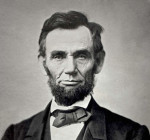The events of Charlottesville have me thinking about my role as an historian and teacher. This was reinforced by these comments by James Alex Fields Jr.’s high school history teacher. I don’t think any one teacher can be responsible for the ideas of a single student. But perhaps if I teach more broadly I can make a difference in the challenging process of facing our own racist history. And so, here’s my argument for why we need to take down the Confederate monuments, all of them.
First, we must start by addressing slavery. The desire to continue owning people as property was the central reason for the formation of the Confederacy. Those who created that treasonous anti-American government were clear about that from the beginning and throughout the Civil War. The “states rights” they fought for was the “right” of states to have their slave codes enforced throughout the United States. (See: Fugitive Slave Laws.)
Second, we need to recognize that, following the Civil War, powerful white Southerners (joined by white Northerners) engaged in a concerted effort to re-write the history of the Confederacy as one of patriotic valor in defense of a American principles: states rights, individual liberty, small government, local control, etc. In the process, what they really reinforced were old American ideals of racism, specifically white supremacy.
Third, as part of that effort, white Southerners sold lies about their central leaders. Perhaps most important was the new historical image of Robert E. Lee. In the history you probably learned as a child (and which I did), Lee was the reluctant gentleman general, fighting out of duty to his beloved Virginia even though he knew the cause was wrong. In truth, Lee thought no such thing. As this article well-chronicles, Less was a slaveholder and unrepentant white supremacist throughout his life. The cause he fought for was the cause of an exclusively white America.
Fourth, these monuments aren’t left over from our distant past. Most were erected decades after the Civil War, either during the early twentieth century (to reinforce the ideas promoting Jim Crow segregation) or the 1950s and 1960s (to combat ideas of the Civil Rights movement). The idea that they should be grandfathered in as relics is silly. They were built long after the Civil War to bolster false claims about the War and to promote ideas of white racial superiority. They were erected specifically to give white nationalists monuments to revere. (You can watch that history unfold in geographical terms here, or see this handy chart prepared for a study by the Southern Poverty Law Center.)
Fifth, these monuments haven’t lost their power. People of color have been speaking up with that message for decades, sharing their pain at seeing the Confederacy revered in public spaces. While that should be enough, the events of Charlottesville reinforce that those on the opposite side – the neo-Nazis, neo-Confederates, KKK, and other white supremacists – also see these as potent symbols of their ideology. They are upset about the possible removal of Lee’s statue not because it represents ‘the South’ (which was 40% black on the eve of the Civil War) or even ‘white culture’ (he was responsible for the deaths of hundreds of thousands of Americans, white and black). They are upset about removal because Lee’s statue represents white supremacy, the ideology shared by Confederates and Nazis alike.
Should we learn this history? Certainly. But these monuments don’t help us do that. They were erected to obscure the true history of our nation. It is past time that we saw through them and removed them as an obstacle to our ongoing fight against racism.











